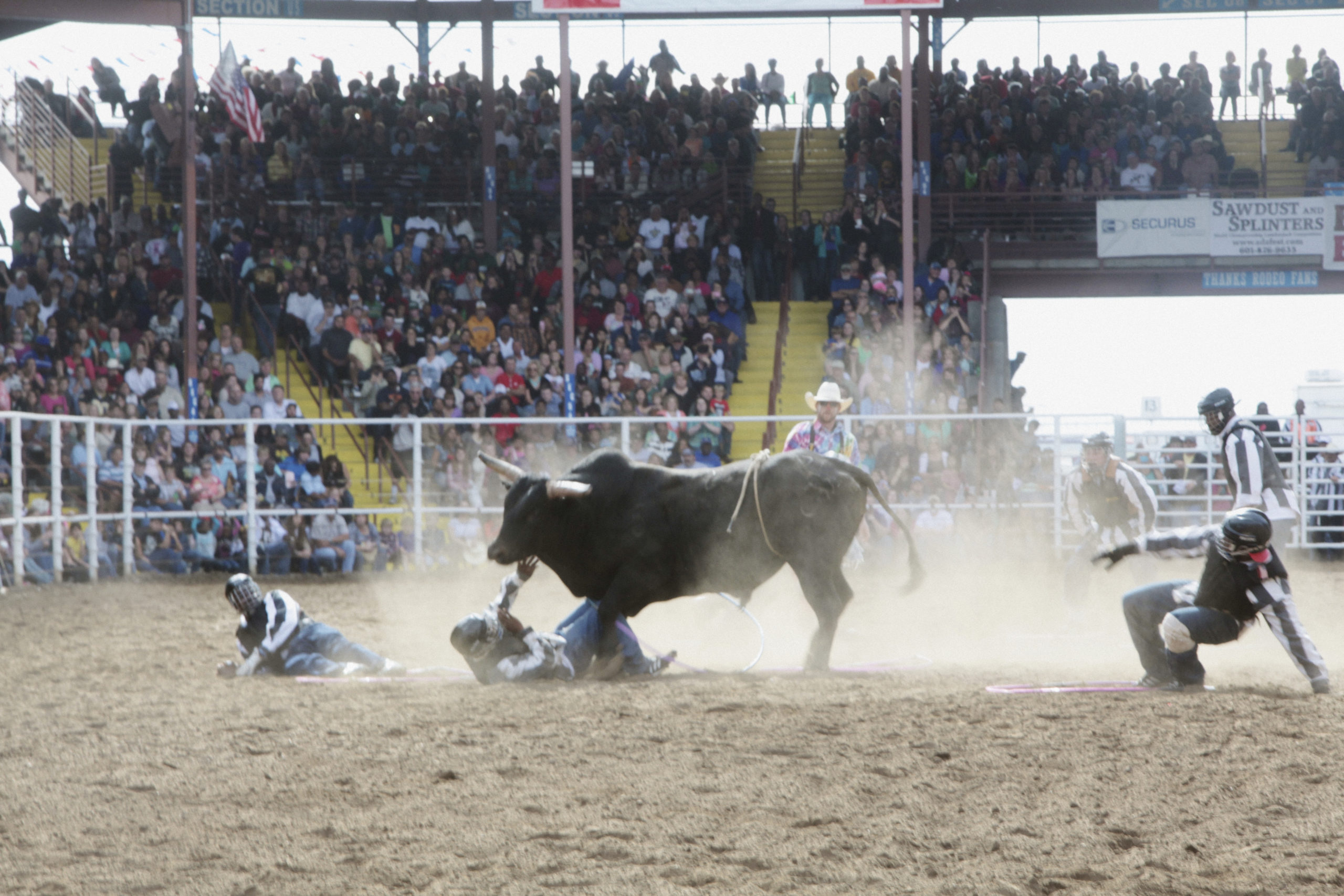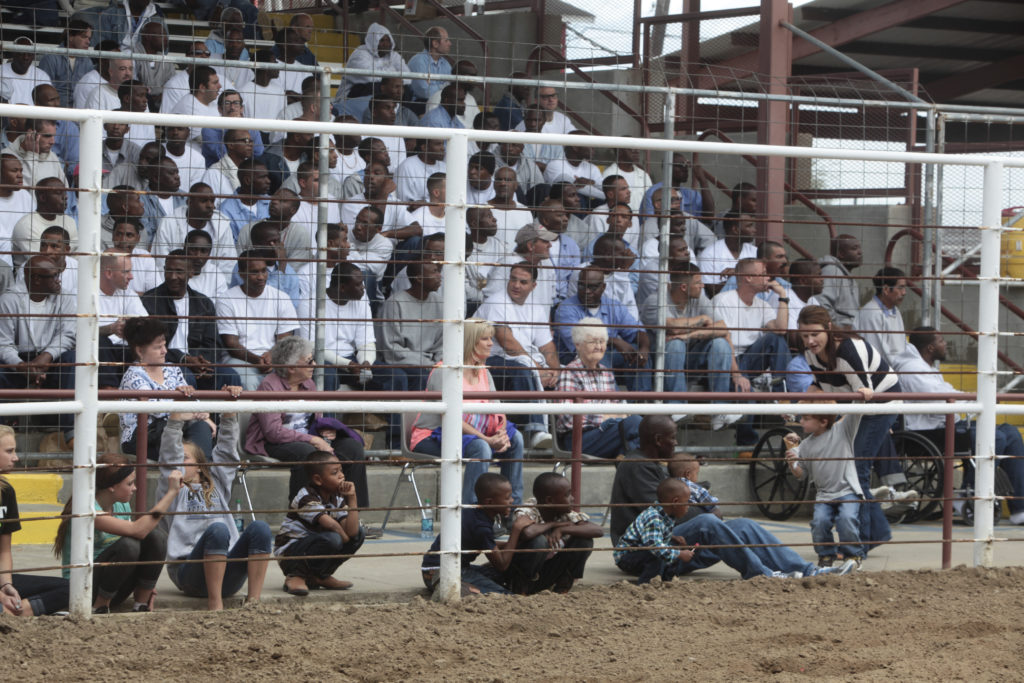
Although the 13th Amendment abolished slavery in 1865, it did not ban forced labor for men and women convicted of a crime, no matter how minor the offense. The nation’s largest maximum-security facility, the Louisiana State Penitentiary, bases its operations on this distinction. Roughly 6,500 men incarcerated at the facility are required to work onsite, with the exception of those in solitary confinement. Many of the jobs involve growing, picking, and processing crops across 18,000-acres—land nearly one third the size of Baltimore City.
For more than 30 years, New Orleans-natives Keith Calhoun and Chandra McCormick have documented the mass incarceration epidemic at Angola. Their photography and videos record the exploitation of the incarcerated, 75.1% serving lifetime sentences, while also showcasing their humanity and individual stories. In preparation for the exhibition of Calhoun and McCormick’s work at the BMA, Associate Curator Leslie Cozzi visited Angola. Her trip coincided with the Angola Prison Rodeo. Every year on one Sunday in April and four Sundays in October, the prison’s arena fills with 10,000 spectators waiting to see Angola’s incarcerated compete in bull riding and other rodeo events for money and prizes.
. . .
When you drive through the front gate of the Louisiana State Penitentiary, you see a sign declaring “You Are Entering the Land of New Beginnings.” It seems ironic, given that most men incarcerated there are serving life sentences. Nevertheless, aside from the barbed wire fencing around the compounds where individuals are housed in the distance, the landscape is disarmingly bucolic.
Established on land that once served as cotton and sugarcane plantations, the Penitentiary is often called Angola, as it was the country of origin for many of the enslaved plantation workers. It’s also referred to as the Farm, because of the labor extracted from those currently serving sentences.
Thousands attend Angola’s rodeos each year, and tickets are 20 bucks a pop. Some attend just for the diversion, some for an opportunity to connect with loved ones they can’t otherwise see. Corrections officers wearing facemasks sit on dune buggies directing cars and monitoring the crowds entering. If it weren’t for the surveillance, it would feel like you were on your way into a county fair.

No cameras are allowed inside the rodeo grounds, but the screening seemed somewhat lax. A few female corrections officers asked us to empty our pockets then waved us inside and wished us a nice day. My traveling companions and I split up. Some were drawn to the craft fair that accompanied the rodeo, where men who are permitted to learn skilled trades in the prison workshops sell their wares. I, on the other hand, took my notebook and headed to the rodeo.
I arrived just in time for the “Angola Bust-Out,” an event where eight inmates riding bareback on bucking bulls are released from the chutes simultaneously. It’s a confusing melee. The goal is for the rider to stay mounted for 8 seconds until the buzzer sounds. Only one man did–Robert McKinney, last year’s “all-around champion,” according to the rodeo announcer. Most of the other riders were thrown off instantly–the event seemed to take place within the blink of an eye.
Bareback riding followed, and the competitors–again, members of the incarcerated population–were awarded points based on how long they stayed on their bucking horses. I looked around the stadium as I waited for each rider. I noticed various sponsorship signs. Someone had sponsored multiple events, including the ‘Pinball’ game where incarcerated men stand in hula-hoops trying not to flinch as the rodeo clowns provoke a massive bull released into the arena. Last ‘pin’ standing wins. Local businesses, including a GMC dealership, were advertising as well. “The paint’s coming off that horse,” joked Rudy, one of the rodeo clowns, as a man thrown by a bull was unable to stand and dragged out of the arena by two red-shirted ranch hands.
The events continued in succession, as people left and re-entered the stadium with treats like ice cream sundaes and blooming onions. I didn’t have much of an appetite, and at the time eating seemed somehow disrespectful.
An ambulance backed up into one of the entrances adjacent to the rider’s chutes as more bull riding was underway. It seemed a bit late in the game for such a gesture, I thought, as I listened to Rudy’s bull-themed jokes: “Hey bull! Your mamma’s a cow! Your sister’s a heffer. Your daddy’s…a boot!” It struck me how sexist most of their humor was. Only the occasional escape pun broke up a steady stream of wife and mother-in-law one liners.
It was a game of chance where the only way to succeed was to suppress one’s fear along with any instinct for self-preservation that might accompany it.
When it came time for “Convict Poker,” another spectacle peculiar to Angola, the theme music for The Pink Panther played over the loudspeakers. Rodeo hands set up white plastic lawn chairs and a large red table about 15 feet in front of the chutes on one side of the stadium. Four incarcerated men wearing helmets, face masks, and flack vests sat down and placed their hands on the table. The objective was to be the last man seated. The bull wasted no time, charging the table and leaving the whole ensemble in smithereens within seconds. To make sure the audience got their money’s worth, the event was performed again on the opposite side of the arena. The second bull was less interested in playing along, and the clowns coaxed it into charging by throwing a vacated chair at its head. The event seemed to embody the strange cocktail of the rodeo–periods of boredom, mixed with sudden violent provocation as men were flung into the air like ragdolls. It was a game of chance where the only way to succeed was to suppress one’s fear along with any instinct for self-preservation that might accompany it.
As the rodeo concluded and people poured out of the stadium, I met back up with one of my companions, a New Orleans-based artist who, like me, was visiting Angola for the first time. She had spent most of her day at the craft fair. Lingering over the beautiful carvings and hand-tooled bowls in the woodworking section, for the first time that day, I choked back tears. I’m not a naïve believer in the all-encompassing power of art. I understand, however, that art can function as a powerful means of communication. I left Angola wondering how many lives might unfold differently if all people were given the tools to express themselves through art rather than with force.
Slavery, The Prison Industrial Complex: Photographs by Keith Calhoun and Chandra McCormick is on view at the BMA June 16, 2019 – October 27, 2019.




